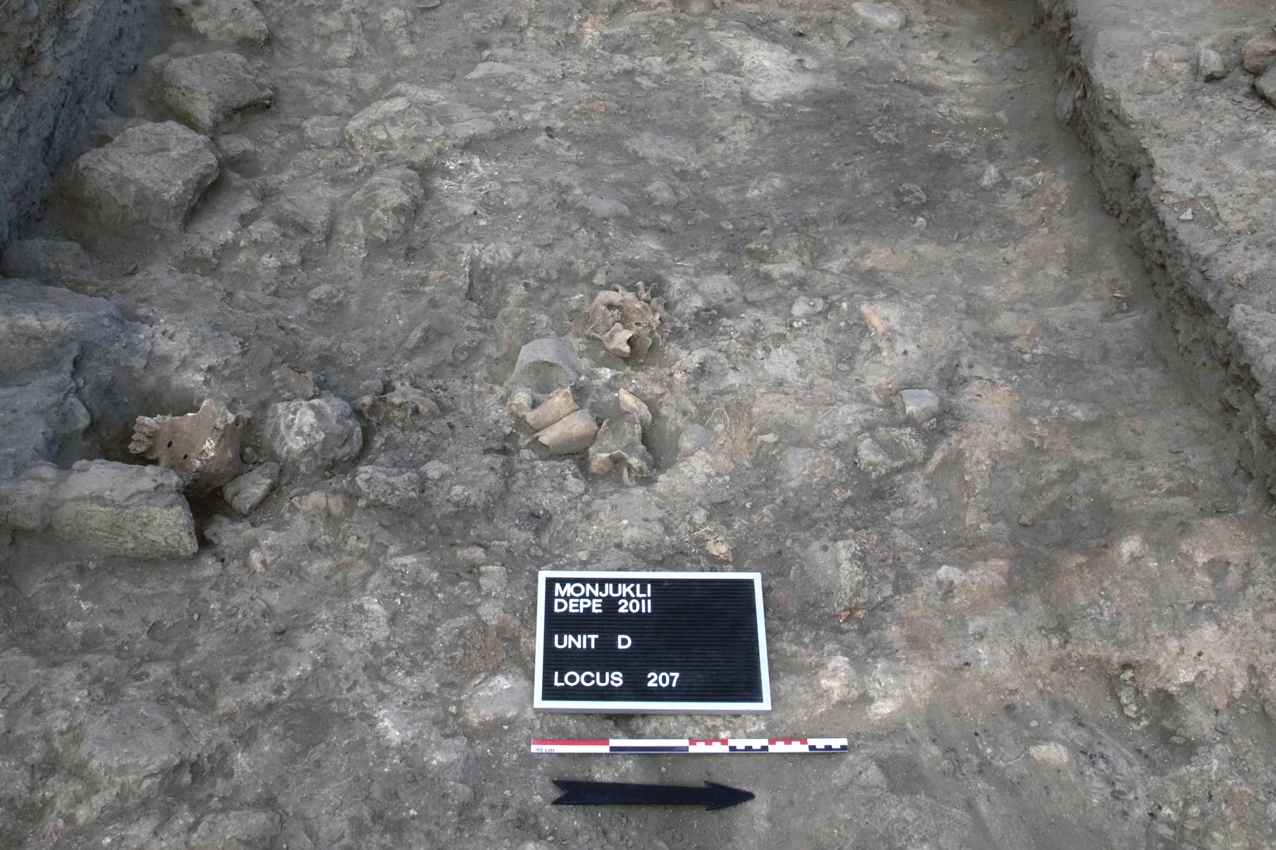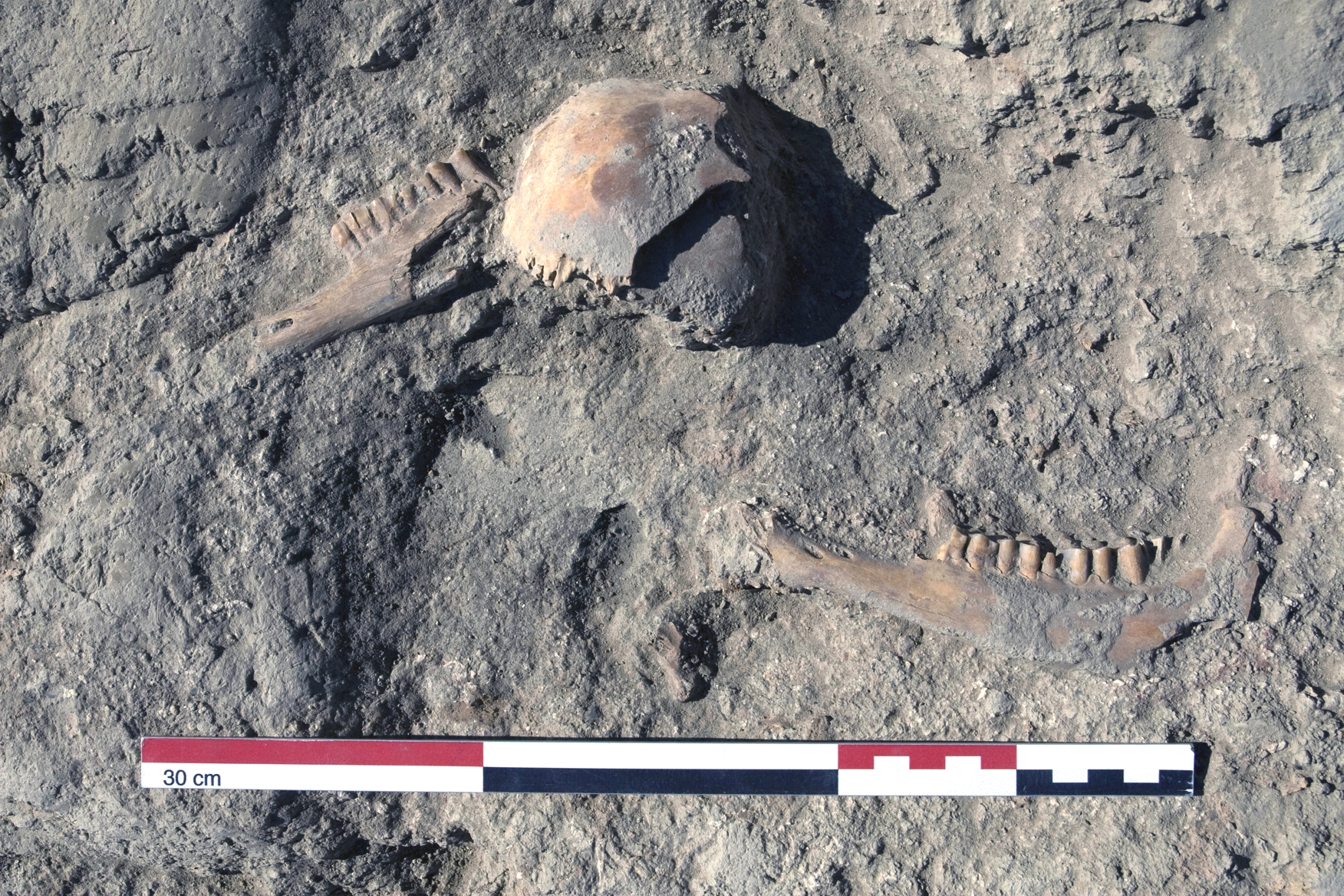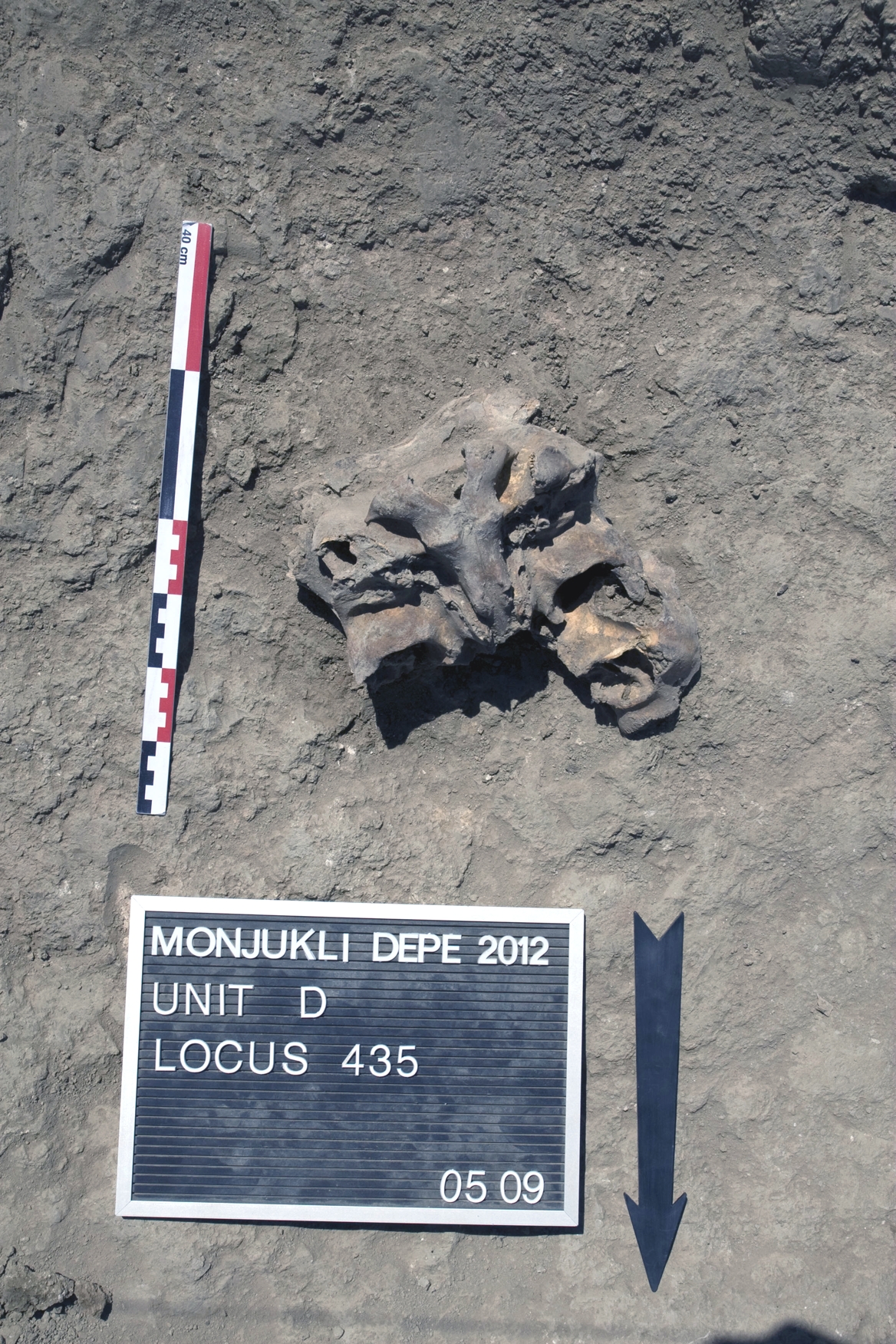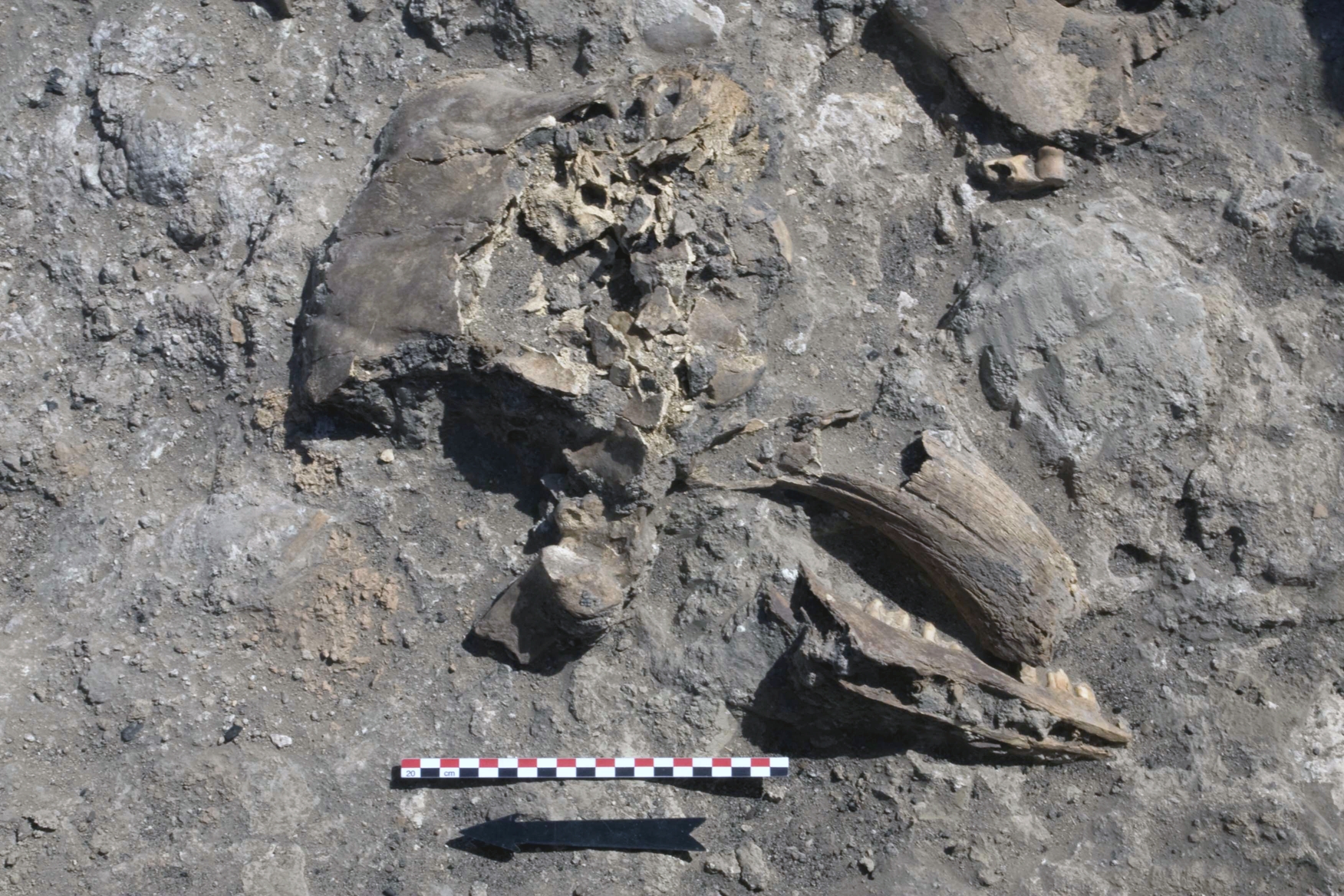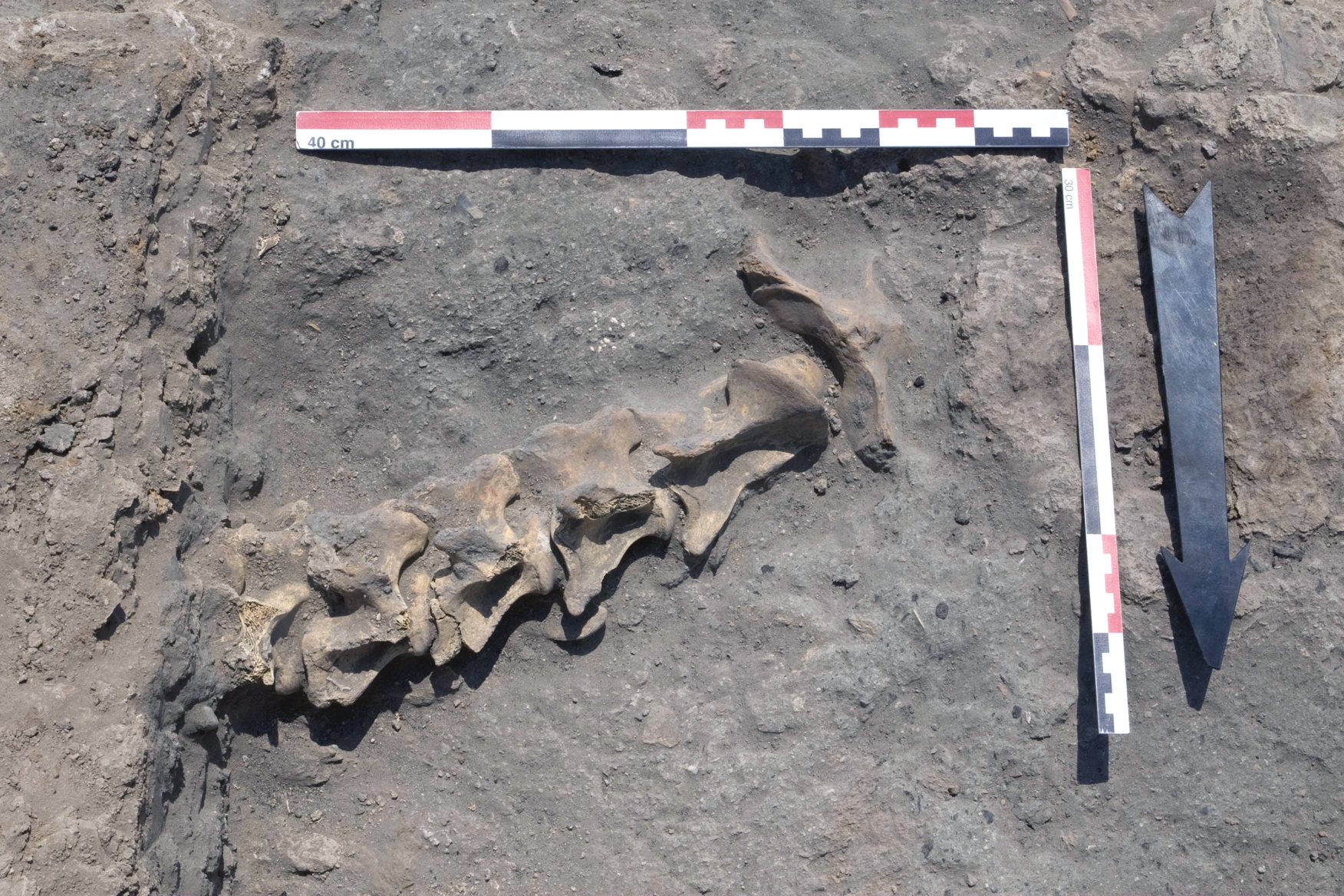Archaeozoological investigations
A large quantity of mostly very well preserved animal bones was recovered in the course of the excavations at Monjukli Depe. The study of over 52,000 bone fragments revealed the presence of mammals, birds, fish, and reptiles from the site. Sheep and goat are the dominant taxa among the domesticated livestock both in the early Aeneolithic (5th mill. BCE) bone collection as well as in the Neolithic occupation that dates to the early 6th mill. BCE. A markedly smaller number of domesticated cattle were recovered. Bones of dogs complete the spectrum of domesticated animal taxa. The primary wild species present consist of wild ass and gazelle.
The bone assemblage shows clearly that the subsistence economy of the village dwellers was based not only on the cultivation of plants but also on animal husbandry. The repertoire of wild animals points to their occasional use to expand the range of species that contributed to the villagers' food. It is clear, however, that hunting played at best a subsidiary role in the subsistence of the Monjukli Depe dwellers.
Of particular importance is the collection of animal bones from the large, ash-filled Eastern Midden. This archaeological feature consists of an open area surrounded by houses and was characterized by numerous, relatively complete animal skulls and other bones that were still in articulation when they were deposited. A contextual analysis compared the bones from the Eastern Midden to those from other contexts in the Aeneolithic settlement. Those in the Eastern Midden have a lesser degree of fragmentation, occur in higher densities, and include a greater proportion of cattle and wild taxa such as gazelle or wild sheep. Together with the especially good preservation of skulls, jaws, and horn cores, the find situation suggests that the fauna in the Eastern Midden most likely represents the remains of feasts in which cattle seem to have played a particularly important role.
Among the animal bones from Monjukli Depe were a small number of bone artifacts in the form of awls or pieces of pelvic bones with a hole that shows traces of burning.
The study of the faunal material from Monjukli Depe was carried out in the Archaeozoological Section of the German Archaeological Institute in Berlin under the direction of Prof. Dr. Norbert Benecke.
For further reading, see Benecke in Pollock et al. 2011; Benecke in Pollock et al. 2018; Eger in Pollock et al. (eds.) 2019; Eger et al. in press; Eger 2020.
